 General
General  General Archive
General Archive  Cleveland's 10 Worst First Round Picks Since 2000
Cleveland's 10 Worst First Round Picks Since 2000
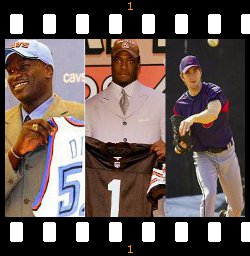 Feeling some unsettling optimism brewing for the imminent NBA Draft and the Cavaliers’ pair of top five picks? No worries. There’s a cure for that. With the Cavs, Browns, and Indians reaching the playoffs just eight times out of a combined 33 seasons this century, the only thing more common than early first round draft picks in Cleveland are the eventual regrets surrounding them. Need a reminder of the misery? Of course you don’t. But here it is anyway—the Top 10 Most Disastrous First Round Selections by Cleveland teams since the year 2000… with rare pictures!
Feeling some unsettling optimism brewing for the imminent NBA Draft and the Cavaliers’ pair of top five picks? No worries. There’s a cure for that. With the Cavs, Browns, and Indians reaching the playoffs just eight times out of a combined 33 seasons this century, the only thing more common than early first round draft picks in Cleveland are the eventual regrets surrounding them. Need a reminder of the misery? Of course you don’t. But here it is anyway—the Top 10 Most Disastrous First Round Selections by Cleveland teams since the year 2000… with rare pictures!
Pre-Draft Warm-Up
So, dredging up some horrible Cleveland draft picks—sounds like shooting fish in a barrel, right? Well, not if you consider that I had to narrow the substantial list of candidates down to a mere Top 10.
From 2000-2010, the Cleveland Indians, Browns, and Cavaliers selected a total of 31 players in the first rounds of the MLB, NFL, and NBA drafts, respectively (supplemental drafts not included). Today, just SIX of those men (19%) are playing in Cleveland-- and that’s only if you count Alex White, who’s currently making his impact on the 60-day disabled list. (The others are J.J. Hickson, Christian Eyenga, Joe Thomas, Alex Mack, and Joe Haden).
To take it further, only 17 of those 31 Cleveland first-rounders are currently on any MLB, NFL, or NBA roster-- a sustained success rate of 55%.
Just how bad is that exactly? Well, for comparison purposes, I randomly looked at a few other relatively downtrodden sports towns to see how their baseball, basketball, and football teams have fared with first round picks over the same time period.
MLB, NFL & NBA First Round Picks: 2000-2010
City………..…Total Picks..… On 2011 Roster...........…Still Active (Any Team)*
Atlanta ..................29 …….…… 13 (45%) ………………….... 25 (86%)
Minneapolis ……34………...... 15 (44%) ………………...…. 23 (68%)
Detroit ….…….…36………….. 15 (42%) …………………… 24 (67%)
Washington**..... 32………….. 11 (34%) …………………… 18 (56%)
Cleveland ………31…………… 6 (19%) ……………..…….. 17 (55%)
*does not count players on a minor league or European team, etc.
**Washington Nationals picks include several made as the Expos
Yes, even up against cities where infamous draft day punchlines like the Lions and Timberwolves do their business, Cleveland’s ineptitude manages to stand out. Of course, it should be noted that draft picks in baseball obviously take considerably longer to gestate, so first-rounders like Drew Pomeranz and Lonnie Chisenhall may yet help Cleveland catch up with the competition a bit. But in the meantime, there’s no getting around the fact that the Indians, Browns, and Cavaliers rang up some monumentally shitty drafts in the Aughts, and whether due to bad judgment or bad luck-- these drafts have played a major role in the clubs’ ongoing struggles.
So, now that you’re feeling appropriately glum, let’s take that walk down Draft Day memory lane with a Top Ten “Worsts of the Firsts,” selected in order from “ugh” to “noooooo!”
ps. If you're expecting Braylon Edwards and Kellen Winslow to make the list, you will be disappointed. Unfortunately, there's just no room for active, fairly productive starters in this draft-- even if they are enormous assholes.
No. 10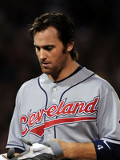 With the tenth worst selection by a Cleveland team in the first round of a 21st century draft, the Cleveland Indians pick… Trevor Crowe, outfielder, University of Arizona. The Cleveland Cavaliers are now on the clock.
With the tenth worst selection by a Cleveland team in the first round of a 21st century draft, the Cleveland Indians pick… Trevor Crowe, outfielder, University of Arizona. The Cleveland Cavaliers are now on the clock.
Taken as the 14th overall pick in the 2005 draft, the switch-hitting Crowe was heavily hyped for his speed and athleticism—projecting as an ideal leadoff man. In his second year of pro ball, he stole 45 bases in just 99 games between Kinston and Akron, while hitting .287. Baseball America ranked him their #64 prospect heading into 2007. Hard to call that a bad pick, really. But by the time Trevor finally found his way to the Bigs in 2009, his limitations had become evident. Though scrappy as advertised, his decent speed was complemented by virtually zero pop. In 2010, he racked up 442 at-bats during a sometimes uncomfortable “assessment period” in Cleveland, but his .251 average, .634 OPS, and 73 strikeouts to 29 walks ended most discussion of Crowe as a viable everyday player. This year, shoulder surgery has likely shelved Trevor for the season, and his future looks hazier than ever.
Players Passed Over for Crowe: Jacoby Ellsbury, Matt Garza, Colby Rasmus, Clay Buchholz
No. 9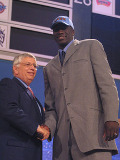 With the ninth pick in the 2011 Regrettable Retro Draft, the Cleveland Cavaliers select… DeSagana Diop, center, from Dakar, Senegal.
With the ninth pick in the 2011 Regrettable Retro Draft, the Cleveland Cavaliers select… DeSagana Diop, center, from Dakar, Senegal.
Hard to believe it’s been 10 years since the people of Cleveland collectively moaned at the Cavs' head-scratching pick of the “unseasoned” 7-footer out of Oak Hill Academy with the unpronounceable name. These were not good times for the franchise, and a long term project didn’t seem like the ideal option. Four years later, the choice didn’t look any wiser. From 2001 to 2005, Diop started only 5 games for the Cavs, and as a bench jockey, never managed better than the 2.3 PPG and 3.6 RPG he posted in LeBron James’ rookie season of 2003-04. To his credit, the big man has surprisingly hung around in the league as a somewhat useful space-taker-upper for Dallas and Charlotte—though he has still never averaged better than 3 points or 5 rebounds per game for a season.
Players Passed Over for Diop: Joe Johnson, Richard Jefferson, Troy Murphy, Zach Randolph, Tony Parker
No. 8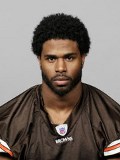 And now, with the number 8 selection in the Crap Draft, the Cleveland Browns take… William Green, running back, Boston College.
And now, with the number 8 selection in the Crap Draft, the Cleveland Browns take… William Green, running back, Boston College.
When his name was called as the 16th overall pick in the 2002 NFL Draft, William Green might as well have walked to the podium waving giant red flags. For all his obvious raw talent and solid collegiate numbers, Green’s demons were the best known things about him—the drug-related deaths of his parents, his own marijuana suspensions, various other attitude questions. And while his rookie season in Cleveland did include hints of greatness (including the breakaway touchdown run against Atlanta in Week 17 that helped the expansion Browns clinch their only postseason appearance), Green’s issues caught up with him in a hurry in 2003. An embarrassing DUI arrest and suspension was followed by the infamous incident in which his fiancée literally drove a knife into his back during a domestic dispute. The downward spiral continued, with suspensions for fighting in 2004 and a nagging series of injuries limiting his mobility. By the end of 2005, “Run, William, Run” would never be heard again.
Players Passed Over for Green: Javon Walker, Ed Reed, Lito Sheppard
No. 7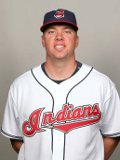 With the seventh pick, the Cleveland Indians take Michael Aubrey, first baseman, Tulane University.
With the seventh pick, the Cleveland Indians take Michael Aubrey, first baseman, Tulane University.
As the Tribe’s first draft pick (11th overall) of the post-Thome era in 2003, Michael Aubrey brought a lot of expectations with him as the first baseman of the future. His first two seasons of pro baseball at Lake County, Kinston, and Akron sustained the hype, as he hit well over .300 and showed some pop with an OPS over .900. Heading into 2005, he was ranked #41 on Baseball America’s Top 100 Prospects list. Then came the injuries: back, knee, groin, abdomen, hamstring. Between 2005 and 2006, Aubrey only played in 42 minor league games. When he came back, the health issues prevented him from ever fully regaining his early form. A cup of coffee with the Indians in 2008 was not memorable—a .200 average in 15 games—and by the next summer, Aubrey was quietly sold to Baltimore. He’s currently the DH for the Washington Nationals’ AAA farm team, and despite hitting four homeruns in one game for Syracuse back in May, the now 29 year-old Aubrey is not exactly carrying any club’s lofty expectations with him anymore.
Players Passed Over for Aubrey*: Aaron Hill, Chad Billingsley, Carlos Quentin, Adam Jones
*The Tribe took two other first-rounders in 2003 that haven’t worked out so great, either: Brad Snyder and poor old Adam Miller.
No. 6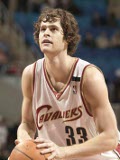 For the number six selection in the Disaster Draft, the Cleveland Cavaliers pick… Luke Jackson, forward, University of Oregon.
For the number six selection in the Disaster Draft, the Cleveland Cavaliers pick… Luke Jackson, forward, University of Oregon.
For all the talk about the Cavs’ failures to bring in bigtime free agents to play alongside LeBron James, the draft is where the biggest opportunities were probably missed. The offseason of 2004 was a nightmare of sorts for the franchise, highlighted by budding star forward Carlos Boozer screwing over his blind boss and skipping town. But that summer’s draft was almost as damaging, as the vastly improving Cavs of the teenage LeBron era spent a potentially critical top 10 pick on the shaggy Oregonian, Luke Jackson (also featured in my “Rookies You Stupidly Got Excited About” column). As if it needs reiterating, Luke was not a difference maker. In two seasons in Cleveland, he only appeared in 46 games, averaging under 3 points a contest. He was out of the NBA by 2008.
Players Passed Over for Jackson: Al Jefferson, Josh Smith, J.R. Smith, Jameer Nelson, Kevin Martin, and… Delonte West
No. 5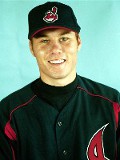 With the fifth pick in the “Hindsight is 20/20” Draft, the Cleveland Indians select Dan Denham, right-handed pitcher, Deer Valley High School, Antioch, California.
With the fifth pick in the “Hindsight is 20/20” Draft, the Cleveland Indians select Dan Denham, right-handed pitcher, Deer Valley High School, Antioch, California.
Recent history seemed to suggest that using a first round choice on a hard-throwing high school hurler could yield some pretty quick rewards. After all, the 2001 Indians featured 20 year-old CC Sabathia (the 20th overall pick in 1998) in the starting rotation. So, when the ’01 MLB Draft rolled around, the Tribe used the #17 overall pick to take Dan Denham—another Californian teenager with Major League caliber stuff—and a brash attitude to boot. Reporting to Burlington for rookie ball that year, the 6’2” right-hander went 0-4 in 8 starts, but posted an encouraging 9.1 strikeouts per 9 innings. It was a number he’d never come anywhere close to matching again. In fact, rather than zipping through the farm system like Sabathia, Denham started growing moss, unable to establish himself beyond the AA level year after year. He never would reach Cleveland, or any other Big League team, as his journey concluded in 2009 with a career Minor League ERA of 4.55, with a 1.48 WHIP and 6.4 SO/9.
Players Passed Over for Denham: David Wright, J.J. Hardy, Dan Haren, Jeremy Sowers
No. 4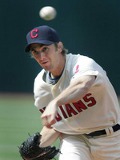 With pick number 4, the Cleveland Indians have traded up and select… Jeremy Sowers, left-handed pitcher, Vanderbilt University.
With pick number 4, the Cleveland Indians have traded up and select… Jeremy Sowers, left-handed pitcher, Vanderbilt University.
As noted in the previous selection, the Indians could have selected another high school pitching phenom in 2001, but opted for Denham over the Ohio-born southpaw Jeremy Sowers, who went three picks later to Cincinnati. As it turned out, though, Sowers did not sign with the Reds, choosing to play college ball for Vanderbilt. Three years later, the “crafty lefty” was back on the draft board, and the Indians had the #6 overall pick—their highest since taking Paul Shuey at #2 back in 1992. Sowers was selected with the hopes that he would excel more quickly than the team’s other Jeremy—the highly touted (and highly paid) 2002 first-rounder Jeremy Guthrie-- who was then struggling mightily in the Minors (he has since turned into a decent pitcher for the Orioles). Things went according to plan for a while, as Sowers immediately dominated Minor League hitters and looked very sharp in his first 14 Big League starts in 2006 (7-4, 3.57 ERA, 1.19 WHIP). He didn’t miss many bats, though, and for whatever reason, once his mystery was solved by Major League hitters, the clever Sowers seemed helpless to adapt. In four seasons with the Indians, he posted an 18-30 record with a 5.18 ERA and 1.44 WHIP. With injuries adding to his obstacles, Sowers hasn’t pitched in Cleveland since 2009, and it seems unlikely he will again.
Players Passed Over for Sowers: Jered Weaver, Billy Butler, Stephen Drew, Phil Hughes
No. 3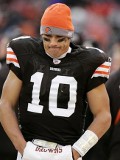 With the third pick in the Draft of No Return, the Cleveland Browns select… Brady Quinn, quarterback, Notre Dame.
With the third pick in the Draft of No Return, the Cleveland Browns select… Brady Quinn, quarterback, Notre Dame.
Draft Day has always been the most exciting day on the calendar for the expansion Browns (since the games themselves certainly aren’t), and in 2007, the payoff actually seemed to meet the buildup. The logical, blue collar portion of the fan base was very pleased with the selection of offensive lineman Joe Thomas with the #3 overall pick, and the excitable bandwagon contingent got their moment, too, as Cleveland traded away their 2008 first-rounder to Dallas and grabbed the rapidly plummeting Quinn at #22. For a team with Charlie Frye under center, this seemed like a critical step toward progress—unless, of course, you’d actually watched a lot of Fighting Irish games. While Quinn’s pretty-boy looks and childhood past as a Browns fan made him the franchise’s instant star-in-the-making, his on-the-field play brought the Hollywood script to an abrupt halt. Brady wasn’t terrible so much as extremely limited. He started just 12 games across three years in Cleveland, constantly battling the mighty Derek Anderson for snaps, and failing to take the reins thanks to a frustrating reliance on pointless 2-yard dump-off passes. Meanwhile, the Cowboys used the Browns’ 2008 pick to take the dynamic Felix Jones. It might have been a complete and utter disaster if not for the fact that Quinn was miraculously traded for greater value once again last year, as the Broncos shipped future Madden cover boy Peyton Hillis to Cleveland for a QB who wouldn’t wind up throwing a single pass in 2010.
2008 Draft Options Lost for Quinn: Felix Jones, Chris Johnson, Mike Jenkins, DeSean Jackson
No. 2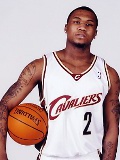 With the second pick in the BackDraft (did you check that door for heat?), the Cleveland Cavaliers select… Dajuan Wagner, guard, University of Memphis. The Cleveland Browns are now on the clock.
With the second pick in the BackDraft (did you check that door for heat?), the Cleveland Cavaliers select… Dajuan Wagner, guard, University of Memphis. The Cleveland Browns are now on the clock.
He was the greatest scorer in New Jersey high school history and regularly called “the next Allen Iverson.” Today, at just 28, he is back in Jersey and living a quiet life, almost five years removed from his last NBA game. Dajuan Wagner was the #6 overall pick by the Cavs in 2002—the year before another fairly dominant high school player went #1—and his potential was boundless. It’s easy to forget about now, especially through the gaseous cloud of the James era, but Wagner’s short-circuited career—along with the 2004 missteps mentioned in the Luke Jackson section—may have had as much to do with the Cavs’ future playoff failures as anything. In fact, it was Wagner who was featured alongside LeBron James in promotional materials leading up to James’ rookie season in 2003. Juanny had struggled in his own rookie season the previous year, shooting just 37% from the field. But he still averaged 13 PPG, and he was only 20 years old! With time on his side, Wagner was a key building block in the new Cavalier plan. But as you might have guessed from the pattern we’ve established here, everything went wrong in a hurry. A series of bizarre illnesses in 2003 led to a stunning diagnosis—Wagner had colitis. With the surgeries and difficult recovery periods that followed, the 6’2” shooting guard only suited up in 55 games over the next two years, averaging just 6 points per contest. By the summer of 2005, it was already over. The Cavs passed on Wagner’s option, and LeBron’s potential righthand man was out of work at 22. A comeback attempt resulted in just one more game and one more basket—a three pointer—for Golden State on November 11, 2006. End scene.
Players Passed Over for Wagner: Nene, Amar’e Stoudamire, Caron Butler, Tayshaun Prince
No 1.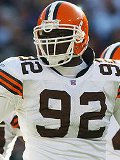 And with the #1 pick in the Draft of Forgotten Dreams, the Cleveland Browns select… Courtney Brown, defensive lineman, Penn State.
And with the #1 pick in the Draft of Forgotten Dreams, the Cleveland Browns select… Courtney Brown, defensive lineman, Penn State.
Okay, I suspect there are two questions: 1) Where is Tim Couch? 2) Where is Gerard Warren? Answer 1) Tim Couch was drafted in 1999, so he doesn’t fit into this discussion—but even if he did, the man was statistically a surprisingly “okay” NFL starting quarterback on a very bad team for several years. Answer 2) Warren has played 10 seasons and is still a useful member of the New England Patriots. He has never racked up sacks, but he plays every Sunday, takes up space, and has made a decent career for himself.
That leaves us with the third member of the Browns’ holy trinity of franchise-killing, first round failures: “The Quiet Storm.” Eleven years ago, Courtney Brown was Cleveland’s second straight #1 overall pick, and with a roster full of expansion garbage, his most vital attribute was his reliability. A man this big, strong, quick, and smart COULD NOT fail. The Browns needed an anchor for the D-line—someone that could be installed there and counted on for the next decade. And appropriately enough, this 6’4”, 280 pound behemoth’s name was Brown.
Once Courtney took the field, of course, it slowly became clear that his Quiet Storm personality wasn’t necessarily conducive to the NFL—or at least to a team without an identity. Brown played reasonably well during his rookie season. In fact, it was by far the best season of his career—61 tackles, 4.5 sacks, and a full 16 games played. But his impact on the game often seemed strangely subdued. Opponents were able to double and contain him, and the dominant Penn State version of Brown only showed occasional flashes of translating himself to the speed of the pro game.
Then came the injuries. During a immeasurably important period in the development of the new Cleveland Browns, their most prized draft pick became a ghost. Just five games played and 14 tackles in 2001. A year later, as Cleveland made its first and only postseason run of the expansion era, Brown was mostly watching from the sidelines again, playing in just 11 games and managing a meager 30 tackles and 2 sacks for the year. Though he was still only 24, Brown now looked like a rundown old veteran, frustrated and fragile. And though he’d tally a career-high 6 sacks in 2003, it was right back to IR for virtually all of 2004—2 games played, 2 tackles. Result: Brown—the anchor—was cast overboard. Released after five disappointing seasons.
Like every other former Browns lineman of the last decade, Courtney was then signed by the Broncos. But after another lackluster performance in limited duty in 2005, the writing was on the wall. Courtney Brown—the young bedrock of the new Browns organization—was out of the game entirely at 27… with just 19 career sacks to his name.
Players Passed Over for Brown: LaVar Arrington, Jamal Lewis, Thomas Jones, Brian Urlacher, Shaun Ellis, John Abraham, Shaun Alexander
Supplemental Crap Draft:
The Cleveland Cavaliers are on the clock…
- NBA Announces 2013-2014 Schedule
- Browns Ink Sharknado
- Sharknado A No-Show For Rookie Camp
- Trent Richardson Out Until Training Camp
- Browns Sign Brandon Jackson
- Carrasco Suspended Eight Games
- Browns Add to Wide Receiver Depth with David Nelson
- Browns Need to Learn from Past Draft Mistakes
- Browns Release Chris Gocong and Usama Young
- Browns Missing on Grimes Disappointing, But Not The End
The TCF Forums
- Movies coming out
rebelwithoutaclue (Tuesday, January 21 2014 12:56 PM) - 2015 Recruiting
jclvd_23 (Tuesday, January 21 2014 12:38 PM) - The 2014 Offseason Thread
Larvell Blanks (Tuesday, January 21 2014 12:25 PM) - Official- Browns Coach Search/Rumors
Larvell Blanks (Tuesday, January 21 2014 11:53 AM) - Chris Grant's first 3 drafts
Kingpin74 (Tuesday, January 21 2014 10:13 AM) - Mike Brown
YahooFanChicago (Monday, January 20 2014 11:15 PM) - 2014 Hoops Hockey Hijinx
jpd1224 (Monday, January 20 2014 4:44 PM) - 2014 Recruiting
jclvd_23 (Monday, January 20 2014 2:26 PM) - Wish List - #4 Pick
Hikohadon (Monday, January 20 2014 1:26 PM) - #1 overall pick Anthony Bennett
TouchEmAllTime (Sunday, January 19 2014 1:28 PM)



